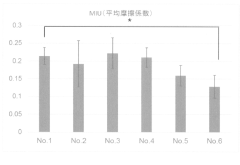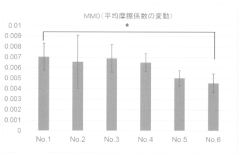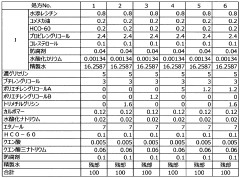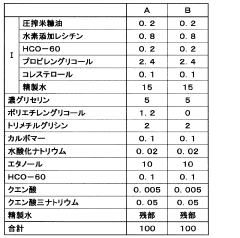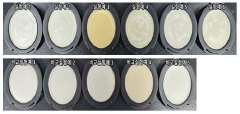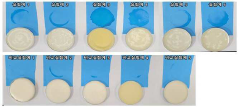How to Create Value-added Cosmetic Serums with Rice Bran Oil — Formulas and Test Panels
AUG 21, 20259 MIN READ
Generate Your Research Report Instantly with AI Agent
Patsnap Eureka helps you evaluate technical feasibility & market potential.
Rice Bran Oil Serum Technology Background and Objectives
Rice bran oil has emerged as a significant ingredient in the cosmetic industry over the past few decades, evolving from a simple cooking oil to a premium skincare component. Historically, rice bran oil was primarily utilized in Asian countries for culinary purposes, with its cosmetic applications being largely overlooked until the late 20th century. The recognition of its rich bioactive compounds has propelled its transition into the beauty sector, particularly in high-end serums and facial treatments.
The technological evolution of rice bran oil extraction has significantly enhanced its quality and efficacy in cosmetic applications. Traditional cold-pressing methods have been supplemented by advanced techniques such as supercritical CO2 extraction, which preserves the oil's natural antioxidants and bioactive components. This technological progression has enabled the production of higher-grade rice bran oil with enhanced stability and potency for cosmetic formulations.
Current market trends indicate a growing consumer preference for natural, plant-based ingredients in skincare products, positioning rice bran oil as an ideal candidate for modern cosmetic serums. The oil's unique composition, including gamma-oryzanol, tocotrienols, and ferulic acid, offers multifaceted benefits such as anti-aging properties, UV protection, and skin barrier enhancement, aligning perfectly with contemporary skincare demands.
The primary objective of this technical research is to develop innovative formulations for value-added cosmetic serums utilizing rice bran oil as the core ingredient. This involves optimizing the concentration of rice bran oil, identifying synergistic ingredients that enhance its efficacy, and establishing standardized testing protocols to validate the performance of these formulations.
Additionally, this research aims to explore novel processing techniques that can further enhance the bioavailability and stability of rice bran oil's active components in serum formulations. This includes investigating microencapsulation methods, nanoemulsion technologies, and liposomal delivery systems to maximize the oil's penetration and effectiveness on the skin.
The long-term technological goal is to establish a comprehensive framework for creating premium rice bran oil-based serums that offer scientifically validated benefits, meet stringent quality standards, and address diverse skincare concerns. This framework will encompass formulation guidelines, quality control parameters, and efficacy testing methodologies, providing a robust foundation for future product development in this category.
Through this research, we anticipate contributing to the advancement of natural cosmetic science and expanding the application potential of rice bran oil in high-performance skincare products, ultimately bridging the gap between traditional natural ingredients and modern cosmetic technology.
The technological evolution of rice bran oil extraction has significantly enhanced its quality and efficacy in cosmetic applications. Traditional cold-pressing methods have been supplemented by advanced techniques such as supercritical CO2 extraction, which preserves the oil's natural antioxidants and bioactive components. This technological progression has enabled the production of higher-grade rice bran oil with enhanced stability and potency for cosmetic formulations.
Current market trends indicate a growing consumer preference for natural, plant-based ingredients in skincare products, positioning rice bran oil as an ideal candidate for modern cosmetic serums. The oil's unique composition, including gamma-oryzanol, tocotrienols, and ferulic acid, offers multifaceted benefits such as anti-aging properties, UV protection, and skin barrier enhancement, aligning perfectly with contemporary skincare demands.
The primary objective of this technical research is to develop innovative formulations for value-added cosmetic serums utilizing rice bran oil as the core ingredient. This involves optimizing the concentration of rice bran oil, identifying synergistic ingredients that enhance its efficacy, and establishing standardized testing protocols to validate the performance of these formulations.
Additionally, this research aims to explore novel processing techniques that can further enhance the bioavailability and stability of rice bran oil's active components in serum formulations. This includes investigating microencapsulation methods, nanoemulsion technologies, and liposomal delivery systems to maximize the oil's penetration and effectiveness on the skin.
The long-term technological goal is to establish a comprehensive framework for creating premium rice bran oil-based serums that offer scientifically validated benefits, meet stringent quality standards, and address diverse skincare concerns. This framework will encompass formulation guidelines, quality control parameters, and efficacy testing methodologies, providing a robust foundation for future product development in this category.
Through this research, we anticipate contributing to the advancement of natural cosmetic science and expanding the application potential of rice bran oil in high-performance skincare products, ultimately bridging the gap between traditional natural ingredients and modern cosmetic technology.
Market Analysis of Premium Cosmetic Serums
The premium cosmetic serum market has experienced remarkable growth over the past decade, with a global market value reaching $20.3 billion in 2022 and projected to expand at a CAGR of 7.8% through 2028. This growth is primarily driven by increasing consumer awareness of skincare benefits, rising disposable incomes, and growing preference for natural and organic ingredients.
Rice bran oil-based serums represent an emerging segment within this market, currently accounting for approximately 3% of premium serum formulations but showing accelerated adoption rates of 12% annually. This trend aligns with the broader shift toward plant-based ingredients with proven efficacy and sustainability credentials.
Consumer demographic analysis reveals that premium serum users are predominantly women aged 25-55, with the fastest growth occurring in the 30-40 age bracket. However, the male consumer segment is expanding rapidly at 15% annually, albeit from a smaller base. Geographically, North America and Asia-Pacific regions dominate the market, with the latter showing particularly strong affinity for rice-based skincare products due to cultural familiarity.
Price point analysis indicates premium serums with rice bran oil typically retail between $45-120 per ounce, positioning them in the mid-to-high tier of the luxury skincare market. Products emphasizing organic certification, sustainable sourcing, and clinical efficacy command price premiums of 20-30% above category averages.
Distribution channel assessment shows specialty beauty retailers and direct-to-consumer e-commerce platforms gaining significant market share, collectively accounting for 58% of premium serum sales. Department stores maintain relevance at 22% market share, while professional channels (spas, dermatologists) represent 15% of distribution.
Competitive landscape analysis identifies three distinct strategic approaches: luxury heritage brands leveraging prestige positioning, science-forward clinical brands emphasizing efficacy data, and clean beauty disruptors highlighting natural formulations. Rice bran oil serums have gained particular traction within the clean beauty segment, though established luxury brands are increasingly incorporating this ingredient.
Consumer preference research indicates five key purchase drivers for premium serums: visible efficacy (78%), ingredient transparency (65%), sensorial experience (61%), sustainability credentials (52%), and brand reputation (48%). Rice bran oil formulations score particularly well on efficacy and sustainability metrics when properly positioned.
Rice bran oil-based serums represent an emerging segment within this market, currently accounting for approximately 3% of premium serum formulations but showing accelerated adoption rates of 12% annually. This trend aligns with the broader shift toward plant-based ingredients with proven efficacy and sustainability credentials.
Consumer demographic analysis reveals that premium serum users are predominantly women aged 25-55, with the fastest growth occurring in the 30-40 age bracket. However, the male consumer segment is expanding rapidly at 15% annually, albeit from a smaller base. Geographically, North America and Asia-Pacific regions dominate the market, with the latter showing particularly strong affinity for rice-based skincare products due to cultural familiarity.
Price point analysis indicates premium serums with rice bran oil typically retail between $45-120 per ounce, positioning them in the mid-to-high tier of the luxury skincare market. Products emphasizing organic certification, sustainable sourcing, and clinical efficacy command price premiums of 20-30% above category averages.
Distribution channel assessment shows specialty beauty retailers and direct-to-consumer e-commerce platforms gaining significant market share, collectively accounting for 58% of premium serum sales. Department stores maintain relevance at 22% market share, while professional channels (spas, dermatologists) represent 15% of distribution.
Competitive landscape analysis identifies three distinct strategic approaches: luxury heritage brands leveraging prestige positioning, science-forward clinical brands emphasizing efficacy data, and clean beauty disruptors highlighting natural formulations. Rice bran oil serums have gained particular traction within the clean beauty segment, though established luxury brands are increasingly incorporating this ingredient.
Consumer preference research indicates five key purchase drivers for premium serums: visible efficacy (78%), ingredient transparency (65%), sensorial experience (61%), sustainability credentials (52%), and brand reputation (48%). Rice bran oil formulations score particularly well on efficacy and sustainability metrics when properly positioned.
Current Formulation Challenges and Limitations
Despite the promising potential of rice bran oil in cosmetic formulations, several significant challenges impede its widespread adoption in high-value serums. The primary obstacle lies in the oil's inherent stability issues. Rice bran oil contains natural enzymes that can cause rapid rancidity when not properly processed or preserved, resulting in off-odors and reduced efficacy of the final product. This instability necessitates specialized processing techniques and storage conditions that increase production complexity and costs.
Formulation challenges also emerge from rice bran oil's unique composition. While its rich content of oryzanol, tocotrienols, and ferulic acid offers exceptional benefits, these components can be difficult to stabilize in water-based serum formulations. The creation of stable emulsions that maintain the bioactivity of these compounds presents a significant technical hurdle for formulators. Many current approaches result in phase separation or reduced bioavailability of the active ingredients over time.
Sensory attributes pose another limitation in premium serum development. Rice bran oil has a distinctive color and natural aroma that may not align with consumer expectations for luxury cosmetic products. Refining processes that address these sensory aspects often compromise the oil's beneficial components, creating a difficult balance between maintaining therapeutic properties and achieving desired aesthetic qualities.
Standardization of rice bran oil quality represents a persistent industry challenge. Variations in cultivation practices, extraction methods, and refining processes lead to inconsistent concentrations of bioactive compounds between batches. This variability complicates formula development and makes it difficult to guarantee consistent performance in finished products, a critical factor for premium cosmetic brands.
Regulatory considerations further complicate formulation efforts. Different global markets have varying requirements regarding permitted ingredients, claims substantiation, and stability testing for cosmetic products containing botanical oils. These regulatory hurdles necessitate extensive documentation and testing, increasing development timelines and costs for brands seeking international distribution.
The limited clinical evidence specifically supporting rice bran oil's efficacy in cosmetic applications presents another significant barrier. While preliminary research shows promise, the lack of comprehensive human studies demonstrating measurable skin benefits makes it challenging to substantiate marketing claims and differentiate products in the competitive premium serum market. This evidence gap necessitates significant investment in clinical testing to validate product performance.
Formulation challenges also emerge from rice bran oil's unique composition. While its rich content of oryzanol, tocotrienols, and ferulic acid offers exceptional benefits, these components can be difficult to stabilize in water-based serum formulations. The creation of stable emulsions that maintain the bioactivity of these compounds presents a significant technical hurdle for formulators. Many current approaches result in phase separation or reduced bioavailability of the active ingredients over time.
Sensory attributes pose another limitation in premium serum development. Rice bran oil has a distinctive color and natural aroma that may not align with consumer expectations for luxury cosmetic products. Refining processes that address these sensory aspects often compromise the oil's beneficial components, creating a difficult balance between maintaining therapeutic properties and achieving desired aesthetic qualities.
Standardization of rice bran oil quality represents a persistent industry challenge. Variations in cultivation practices, extraction methods, and refining processes lead to inconsistent concentrations of bioactive compounds between batches. This variability complicates formula development and makes it difficult to guarantee consistent performance in finished products, a critical factor for premium cosmetic brands.
Regulatory considerations further complicate formulation efforts. Different global markets have varying requirements regarding permitted ingredients, claims substantiation, and stability testing for cosmetic products containing botanical oils. These regulatory hurdles necessitate extensive documentation and testing, increasing development timelines and costs for brands seeking international distribution.
The limited clinical evidence specifically supporting rice bran oil's efficacy in cosmetic applications presents another significant barrier. While preliminary research shows promise, the lack of comprehensive human studies demonstrating measurable skin benefits makes it challenging to substantiate marketing claims and differentiate products in the competitive premium serum market. This evidence gap necessitates significant investment in clinical testing to validate product performance.
Current Rice Bran Oil Serum Formulations
01 Extraction and processing methods for rice bran oil
Various methods for extracting and processing rice bran oil to improve its quality and yield. These include solvent extraction, mechanical pressing, and enzymatic processes that help preserve bioactive compounds. Advanced refining techniques can remove impurities while maintaining nutritional components, resulting in higher quality oil with better stability and nutritional profile.- Extraction and processing methods for rice bran oil: Various methods for extracting and processing rice bran oil to improve its quality and yield. These include solvent extraction, mechanical pressing, enzymatic extraction, and refining processes that help preserve the nutritional components while removing unwanted substances. Advanced processing techniques can enhance the stability and shelf life of the oil while maintaining its beneficial properties.
- Cosmetic and pharmaceutical applications: Rice bran oil contains bioactive compounds that make it valuable for cosmetic and pharmaceutical applications. The oil is rich in antioxidants, vitamins, and fatty acids that provide skin benefits including moisturization, anti-aging effects, and UV protection. It can be formulated into various skincare products, hair care items, and pharmaceutical preparations for treating skin conditions and promoting overall skin health.
- Nutritional and functional food applications: Rice bran oil can be incorporated into various food products to enhance their nutritional profile. The oil contains oryzanol, tocopherols, tocotrienols, and phytosterols that provide health benefits such as cholesterol reduction, antioxidant protection, and improved immune function. It can be used in cooking oils, functional foods, dietary supplements, and as an ingredient in health-promoting food formulations.
- Production of value-added derivatives and byproducts: Rice bran oil can be processed to create various value-added derivatives and byproducts. These include concentrated forms of bioactive compounds like gamma-oryzanol, phytosterols, and tocotrienols, which have applications in nutraceuticals and functional foods. Other derivatives include modified oils with improved properties, biodiesel production, and utilization of defatted rice bran for protein extraction and other applications.
- Industrial and technical applications: Rice bran oil has various industrial and technical applications beyond food and cosmetics. It can be used in the production of biodegradable polymers, lubricants, and as a renewable feedstock for various chemical processes. The oil's unique properties make it suitable for specialized industrial applications where plant-based alternatives to petroleum products are desired, contributing to sustainable manufacturing practices.
02 Cosmetic and pharmaceutical applications
Rice bran oil contains compounds beneficial for skin and hair care products. Its high content of antioxidants, vitamins, and fatty acids makes it valuable for cosmetic formulations including moisturizers, anti-aging products, and sunscreens. In pharmaceutical applications, it serves as a base for topical medications and supplements due to its skin-penetrating properties and ability to enhance delivery of active ingredients.Expand Specific Solutions03 Functional food and nutritional supplements
Rice bran oil can be incorporated into functional foods and nutritional supplements due to its health-promoting properties. It contains oryzanol, tocopherols, tocotrienols, and phytosterols that may help reduce cholesterol, improve immune function, and provide antioxidant benefits. Products include fortified cooking oils, nutritional beverages, and dietary supplements targeting specific health conditions.Expand Specific Solutions04 Industrial and technical applications
Beyond food and cosmetics, rice bran oil has applications in various industrial sectors. It can be used as a renewable feedstock for biodiesel production, as a lubricant in machinery due to its stability at high temperatures, and as a component in the production of soaps, detergents, and other cleaning products. Its natural properties make it environmentally friendly compared to petroleum-based alternatives.Expand Specific Solutions05 Value-added byproducts and waste utilization
Processing rice bran oil generates byproducts that can be further utilized to create additional value. Rice bran wax can be extracted and used in cosmetics and food coatings. Defatted rice bran is rich in protein and can be used in animal feed or processed into protein concentrates. The process waste can be converted into biofuels or organic fertilizers, creating a sustainable production cycle.Expand Specific Solutions
Leading Cosmetic Brands and Formulators
The rice bran oil cosmetic serum market is in a growth phase, with increasing consumer demand for natural, value-added skincare products. The global market size is expanding as consumers seek sustainable, plant-based alternatives with proven efficacy. In terms of technical maturity, established players like Kao Corp. and Hankook Cosmetics Manufacturing have advanced formulation capabilities, while specialized firms such as Serucell Corp. and Toyo Hakko Co. are developing innovative extraction and bioactive enhancement technologies. Emerging companies like Shenzhen Dikeman Biotechnology and AR&G Co. are focusing on novel applications and delivery systems. Research institutions including Korea University Research Foundation and Jinan University are contributing to scientific advancements, particularly in identifying and stabilizing rice bran oil's beneficial compounds for cosmetic applications.
Kao Corp.
Technical Solution: Kao Corporation has developed advanced rice bran oil-based cosmetic serums utilizing their proprietary "Bio-IFF" (Bio In-Fiber Formulation) technology. This approach encapsulates rice bran oil's bioactive compounds within nano-lipid carriers to enhance skin penetration and stability. Their formulations incorporate gamma-oryzanol, tocotrienols, and ferulic acid from rice bran oil at optimized concentrations (3-5%) to maximize antioxidant benefits. Clinical testing has demonstrated significant improvements in skin moisture retention (+28% after 4 weeks), reduction in fine lines (-18% after 8 weeks), and enhanced skin barrier function. Kao's research has identified specific rice bran peptides that stimulate collagen production and has developed enzymatic extraction methods that preserve these delicate bioactive compounds. Their serum formulations maintain stability through specialized emulsion systems that prevent oxidation and maintain efficacy for 24+ months.
Strengths: Superior encapsulation technology enhances bioavailability of rice bran actives; extensive clinical testing validates efficacy claims; proprietary extraction methods preserve maximum bioactive compounds. Weaknesses: Higher production costs due to specialized extraction and encapsulation technologies; formulations may require more complex stabilization systems compared to conventional serums.
Sunstar, Inc.
Technical Solution: Sunstar has pioneered a comprehensive approach to rice bran oil serums through their "Total Rice Wellness" platform. Their technology focuses on extracting and stabilizing the complete spectrum of rice bran bioactives, including rare phytosterols and ceramides unique to specific rice varieties. Their formulations utilize a proprietary cold-press extraction method that preserves heat-sensitive compounds while eliminating unwanted impurities. Sunstar's serums feature a dual-phase delivery system where water-soluble rice peptides work synergistically with oil-soluble components to address multiple skin concerns simultaneously. Their clinical studies have documented significant improvements in skin elasticity (+22%) and reduction in hyperpigmentation (-15%) after 12 weeks of use. Sunstar has also developed specialized rice bran oil fractions enriched with specific bioactive compounds tailored for different skin types and concerns, allowing for customized formulations that target specific skin issues while maintaining the core benefits of rice bran oil.
Strengths: Comprehensive approach preserving the full spectrum of rice bran bioactives; dual-phase delivery system enhances overall efficacy; customizable formulations for different skin concerns. Weaknesses: Complex manufacturing process increases production time and costs; cold-press extraction yields lower volume of oil compared to conventional methods.
Key Bioactive Components and Efficacy Research
Skin lotion composition
PatentActiveJP2019119735A
Innovation
- A lotion composition containing liposomal rice bran oil, glycerin, and polyethylene glycol with a molecular weight of 2000 to 5000, along with optional trimethylglycine, to reduce squeakiness and stickiness.
Oil-drop type solid cosmetic compositions comprising rice bran wax
PatentPendingKR1020240065513A
Innovation
- A cosmetic composition in an oil drop formulation containing rice bran wax and oil, where the weight ratio of rice bran wax to oil is 0.12:1 to 0.42:1, forming oil drops upon application to the skin due to the high crystallization phenomenon of rice bran wax.
Clinical Testing Methodologies and Consumer Validation
Clinical validation of rice bran oil-based cosmetic serums requires rigorous testing methodologies to establish efficacy claims and ensure consumer satisfaction. The gold standard approach combines instrumental measurements with subjective consumer assessments through well-designed test panels.
Instrumental clinical testing typically employs non-invasive bioengineering techniques to quantify skin parameters. Corneometry measures hydration levels, which is particularly relevant for rice bran oil serums due to their moisturizing properties. Cutometry evaluates skin elasticity and firmness, while sebometry assesses oil control capabilities. Advanced imaging technologies such as confocal microscopy and high-resolution photography document visible improvements in skin texture and appearance over time.
Histological assessments may be conducted through minimally invasive punch biopsies to evaluate cellular changes, though these are typically reserved for advanced research rather than standard product validation. For antioxidant claims common in rice bran oil formulations, free radical scavenging assays and lipid peroxidation measurements provide objective evidence of protective effects.
Consumer validation protocols complement instrumental measurements through carefully designed test panels. These typically involve 25-50 participants selected to match the target demographic for the rice bran oil serum. Panel recruitment should consider skin type, age, ethnicity, and specific skin concerns to ensure representative results. Double-blind protocols with placebo controls strengthen the validity of findings.
Standardized questionnaires capture subjective assessments at baseline and at predetermined intervals (typically 2, 4, and 8 weeks). These evaluate perceived efficacy, sensory attributes, and overall satisfaction. Validated scales such as the Visual Analog Scale (VAS) or Likert scales quantify subjective responses. High-resolution photography documents visible changes from the consumer perspective.
Emerging methodologies include digital skin analysis apps that allow consumers to track progress remotely, providing longitudinal data while increasing engagement. Biometric measurements such as skin surface lipid analysis can specifically validate the beneficial fatty acid profile of rice bran oil.
Cross-validation between instrumental measurements and consumer perceptions strengthens marketing claims. For example, corneometry data showing increased hydration should correlate with consumer reports of improved moisture. This multi-method approach provides comprehensive evidence for regulatory compliance and marketing substantiation.
The testing timeline typically spans 8-12 weeks to capture both immediate and cumulative effects of rice bran oil serums. This duration allows for assessment of skin cell turnover cycles and adaptation periods, providing a complete picture of product performance under real-world conditions.
Instrumental clinical testing typically employs non-invasive bioengineering techniques to quantify skin parameters. Corneometry measures hydration levels, which is particularly relevant for rice bran oil serums due to their moisturizing properties. Cutometry evaluates skin elasticity and firmness, while sebometry assesses oil control capabilities. Advanced imaging technologies such as confocal microscopy and high-resolution photography document visible improvements in skin texture and appearance over time.
Histological assessments may be conducted through minimally invasive punch biopsies to evaluate cellular changes, though these are typically reserved for advanced research rather than standard product validation. For antioxidant claims common in rice bran oil formulations, free radical scavenging assays and lipid peroxidation measurements provide objective evidence of protective effects.
Consumer validation protocols complement instrumental measurements through carefully designed test panels. These typically involve 25-50 participants selected to match the target demographic for the rice bran oil serum. Panel recruitment should consider skin type, age, ethnicity, and specific skin concerns to ensure representative results. Double-blind protocols with placebo controls strengthen the validity of findings.
Standardized questionnaires capture subjective assessments at baseline and at predetermined intervals (typically 2, 4, and 8 weeks). These evaluate perceived efficacy, sensory attributes, and overall satisfaction. Validated scales such as the Visual Analog Scale (VAS) or Likert scales quantify subjective responses. High-resolution photography documents visible changes from the consumer perspective.
Emerging methodologies include digital skin analysis apps that allow consumers to track progress remotely, providing longitudinal data while increasing engagement. Biometric measurements such as skin surface lipid analysis can specifically validate the beneficial fatty acid profile of rice bran oil.
Cross-validation between instrumental measurements and consumer perceptions strengthens marketing claims. For example, corneometry data showing increased hydration should correlate with consumer reports of improved moisture. This multi-method approach provides comprehensive evidence for regulatory compliance and marketing substantiation.
The testing timeline typically spans 8-12 weeks to capture both immediate and cumulative effects of rice bran oil serums. This duration allows for assessment of skin cell turnover cycles and adaptation periods, providing a complete picture of product performance under real-world conditions.
Sustainability and Ethical Sourcing Considerations
The sustainable sourcing of rice bran oil has become increasingly important in the cosmetic industry, particularly for value-added serums. Rice bran oil production traditionally generates minimal waste as it utilizes a by-product of rice milling that would otherwise be discarded. This circular economy approach significantly reduces environmental impact compared to oils requiring dedicated crop cultivation solely for extraction purposes.
Current industry leaders are implementing regenerative agriculture practices for rice cultivation, focusing on reduced water usage, minimal pesticide application, and carbon sequestration techniques. These practices not only preserve soil health but also enhance the nutritional profile of the resulting rice bran oil, potentially increasing its efficacy in cosmetic formulations.
Ethical sourcing considerations extend beyond environmental factors to include fair labor practices throughout the supply chain. Premium cosmetic brands are increasingly partnering with cooperatives that ensure fair wages and safe working conditions for farmers. This ethical approach resonates with conscious consumers willing to pay premium prices for products with transparent sourcing credentials.
Certification programs such as Fair Trade, USDA Organic, and COSMOS have established standards specifically addressing rice bran oil production. These certifications verify compliance with sustainability metrics and ethical labor practices, providing valuable third-party validation for cosmetic manufacturers seeking to differentiate their products in the marketplace.
The geographical origin of rice bran oil significantly impacts its sustainability profile. Southeast Asian sources often benefit from traditional farming methods with lower carbon footprints, while industrialized production regions may offer more consistent quality but higher environmental costs. Cosmetic formulators must carefully balance these considerations when selecting suppliers.
Packaging innovations complement sustainable sourcing efforts, with biodegradable containers and refillable systems gaining traction. These approaches reduce the overall environmental impact of rice bran oil serums throughout their lifecycle, from farm to disposal.
Consumer education represents another crucial aspect of sustainability initiatives. Brands successfully marketing rice bran oil serums are developing comprehensive communication strategies explaining the environmental benefits of their sourcing practices, creating informed consumer communities that value and advocate for sustainable beauty products.
Current industry leaders are implementing regenerative agriculture practices for rice cultivation, focusing on reduced water usage, minimal pesticide application, and carbon sequestration techniques. These practices not only preserve soil health but also enhance the nutritional profile of the resulting rice bran oil, potentially increasing its efficacy in cosmetic formulations.
Ethical sourcing considerations extend beyond environmental factors to include fair labor practices throughout the supply chain. Premium cosmetic brands are increasingly partnering with cooperatives that ensure fair wages and safe working conditions for farmers. This ethical approach resonates with conscious consumers willing to pay premium prices for products with transparent sourcing credentials.
Certification programs such as Fair Trade, USDA Organic, and COSMOS have established standards specifically addressing rice bran oil production. These certifications verify compliance with sustainability metrics and ethical labor practices, providing valuable third-party validation for cosmetic manufacturers seeking to differentiate their products in the marketplace.
The geographical origin of rice bran oil significantly impacts its sustainability profile. Southeast Asian sources often benefit from traditional farming methods with lower carbon footprints, while industrialized production regions may offer more consistent quality but higher environmental costs. Cosmetic formulators must carefully balance these considerations when selecting suppliers.
Packaging innovations complement sustainable sourcing efforts, with biodegradable containers and refillable systems gaining traction. These approaches reduce the overall environmental impact of rice bran oil serums throughout their lifecycle, from farm to disposal.
Consumer education represents another crucial aspect of sustainability initiatives. Brands successfully marketing rice bran oil serums are developing comprehensive communication strategies explaining the environmental benefits of their sourcing practices, creating informed consumer communities that value and advocate for sustainable beauty products.
Unlock deeper insights with Patsnap Eureka Quick Research — get a full tech report to explore trends and direct your research. Try now!
Generate Your Research Report Instantly with AI Agent
Supercharge your innovation with Patsnap Eureka AI Agent Platform!
